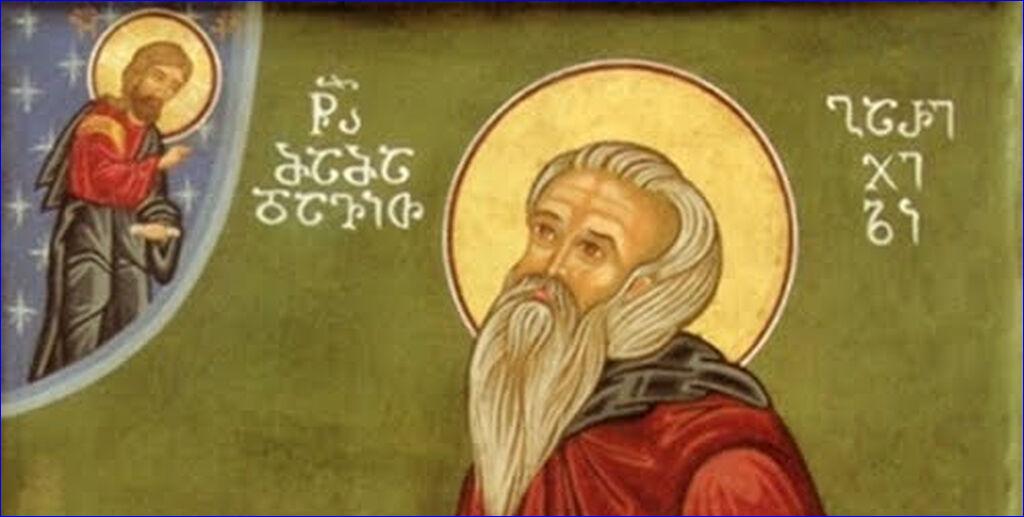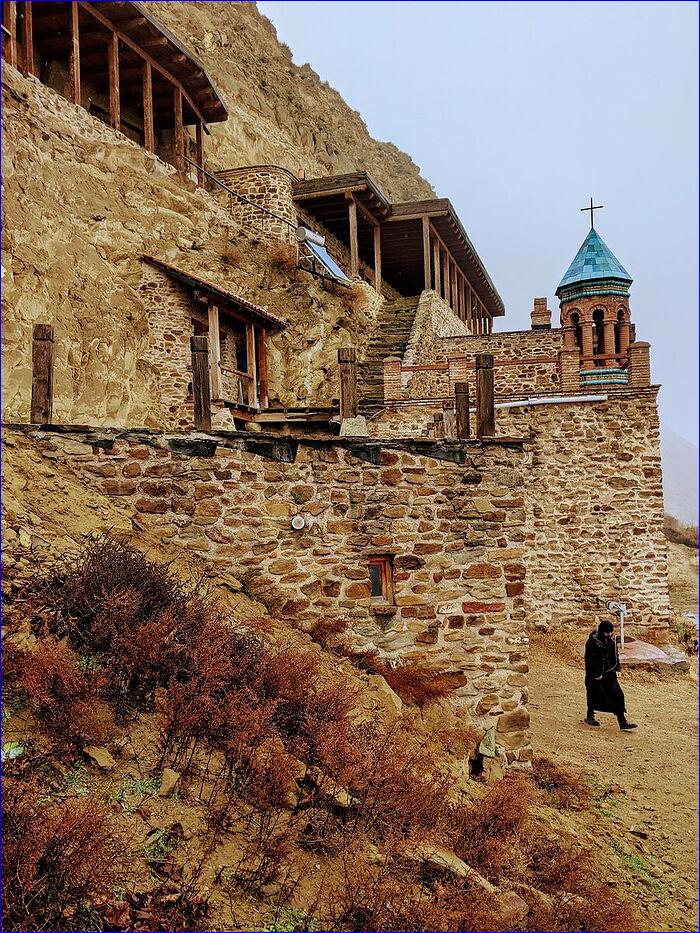


For those residing in the desert, it is a constant reminder of danger, hardship, and even death. It is where fugitives and bandits hide; it is the home of wild animals and the devil. Although entering or traversing it is sometimes necessary, it is dangerous, with deserts being some of the most remote places on earth, especially during the medieval age. With this being said, these elements of the desert only served to attract like a magnet those wishing to isolate themselves for divine contemplation alone, and the first monasteries were established in this otherwise inhospitable environment. The inhospitality of the desert serves as the conduit for the silence that a monastic craves along with its nonmaterial essence, which inspires monastics in their struggle to separate themselves from the material cares of this world.
This pattern of desert monasticism would recur within the nation of Georgia in the sixth century with the arrival of the Assyrian Fathers from the Middle East (most likely Mesopotamia). During this period of Georgian history, there was substantial pressure from the Zoroastrian Sassanid Empire for the Georgian people to become Persianized and abandon their Christian faith. in favor of Zoroastrianism. In addition, the Christianization process had only gone on for roughly 200 years, while the mountain regions of Georgia remained pagan. Because of this, there was a great need for monasticism within Georgia in order to strengthen the Christian faith within the nation. This was recognized by the Assyrian father | Desert Monasticism and the Life of St. Davit Gareji | The Paradise NewsVenerable Ioane of Zedazeni and His Twelve Disciples (6th century)Our Holy Father Ioane of Zedazeni and his twelve disciples, Abibos of Nekresi, Anton of Martqopi, Davit of Gareji, Zenon of Iqalto, Tadeos of Stepantsminda, Ise of Tsilkani, Ioseb of Alaverdi, Isidore of Samtavisi, Mikael of Ulumbo, Piros of Breti, Stepane of Khirsa, and Shio of Mgvime, were Syrian ascetics and the founding fathers of Georgian monastic life. St. Ioane received his spiritual education in Antioch.">St. Ioane Zedazeni, who would lead the other twelve Assyrian fathers to Georgia.
But because of the vast amount of scholarship that would be needed to cover all thirteen of the Assyrian fathers, the main focus of this article will be on the Georgian monastics from the sixth century onwards who labored in the Gareji desert wilderness in what is now southeastern Georgia. The Assyrian father who would call this wilderness home would be St. Davit Gareji, who first began his monastic life within Georgia just outside the city of Tbilisi in a mountainous area now known as Mtatsminda (Holy Mountain) along with his spiritual son Lukiane.
The cave where Davit and Lukiane labored in has a holy spring that is presently visited by the faithful for its healing properties, and is reputed to help those oppressed by demonic possession. However, Davit and Lukiane would only be in Tbilisi temporarily because of the threats posed by the fire-worshipping Zoroastrians, who were the main inhabitants of the city. These threats would only increase after Davit and Lukiane went down into the city preaching the Gospel, ultimately resulting in a false accusation of adultery. To prove this claim, the Zoroastrians brought a prostitute who accused Davit of being the child's father, but God was merciful to His servant and showed the falseness of their claims when St. Davit commanded for the child to speak the name of its real father. After this, the crowd gathered at this event stoned the prostitute to death for her slander, despite the pleadings of St. Davit and his disciple Lukiane.

Knowing that monastic life was unattainable within close proximity to Tbilisi after this event, Saint David of Gareji first settled in the outskirts of Tbilisi, the new capital of Georgia. Through his wondrous preaching, Saint David converted many fire-worshippers and brought people of many creeds to the Christian Faith.
">St. Davit, along with his holy disciple, fled to the refuge of the desert located approximately seventy kilometers (forty-three miles) from Tbilisi. Even today, this region of Georgia is very sparsely populated, with only one artificially created Soviet-era village present. While laboring in the wilderness, the holy ascetics would be fed miraculously by God through the sending of a deer which Lukiane milked. From the sign of the cross, St. Davit would miraculously transform this milk into cheese; upon seeing this miracle, Lukiane told him, "Even if my body rots and wastes away from hunger and thirst, I will not permit myself to fret over the things of this temporal life."
After local hunters discovered their hermitage, this small monastic dwelling was transformed into a monastery with people thronging to labor under the guidance of the Holy Elder. Later in his life St. Davit made a pilgrimage to Jerusalem, but upon reaching the "Ridge of Grace" overlooking Jerusalem, St. Davit out of his humility went no further as he considered himself unworthy of entering the Holy City. On this ridge, St. Davit would take three stones; two were returned when an angel told the Patriarch of Jerusalem that this Holy Elder had taken away all of the holiness of Jerusalem. With one stone in his humble knapsack, St. Davit returned to his monastery, where the brotherhood eventually doubled in number and flourished. Because of this stone from Jerusalem, it is believed by the Georgian faithful that visiting St. Davit Gareji monastery three times counts as a pilgrimage to Jerusalem. At the end of his life, St. Davit was instrumental in founding a monastery nearby in a place called "Mravalmta" (the Rolling Mountain), which remains active into the present day.
For a period of time after the repose of St. Davit, the Gareji, this wilderness was inhabited by monastics off and on due to the frequent troubles befalling the Georgian people from its non-Christian neighbors. During the time of the Soviet Union, the brotherhoods of the Gareji monasteries were entirely destroyed, with the monastery complex being later used as a military base with a firing range for those preparing to be sent to the Soviet-Afghan War.
After the collapse of the Soviet Union, monastic life began once more within the Gareji wilderness, with three of the original twenty-one monasteries functioning with five monks residing in each one of them. These are the St. Davit Gareji monastery, St. John the Baptist monastery, and St. Dodo monastery. Since the repose of St. Davit, there have been multiple Georgian saints who labored in this wilderness and have been declared worthy of being added to the Orthodox calendar. These particular Georgian saints will be the subject of the next article on the subject of desert monasticism within Georgia from its historical roots into the modern day.

or register to post a comment.